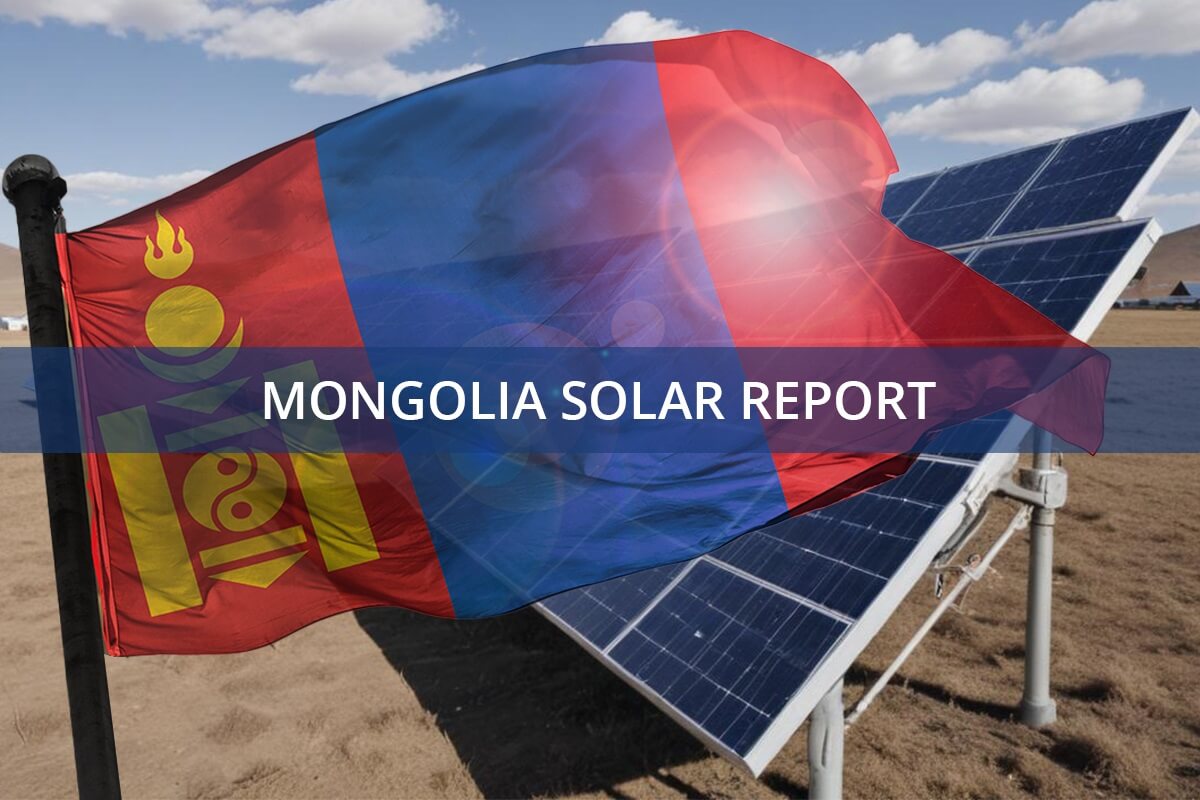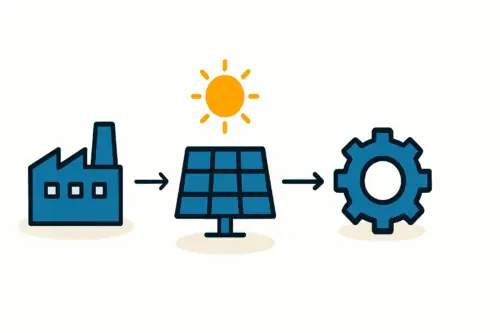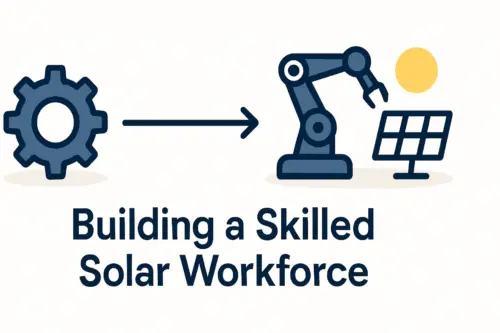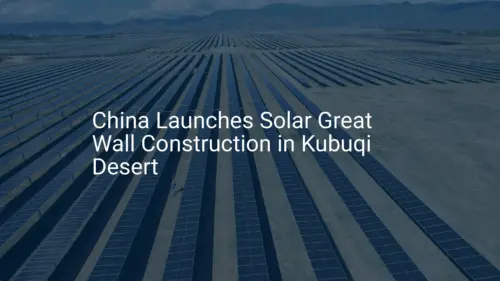Mongolia, the ‘Land of the Eternal Blue Sky,’ boasts some of the highest solar irradiation levels in the world, offering a significant opportunity for energy entrepreneurs.
However, for an investor looking to establish a solar module factory, the journey of the manufacturing equipment is as critical as the business plan itself. The vast, landlocked geography that offers such immense solar potential also creates unique logistical challenges.
Newcomers to the industry often underestimate the complexity of moving heavy, sensitive machinery from a port in China across the border and onto a factory floor in Ulaanbaatar or Darkhan. This guide outlines the key considerations for customs, tariffs, and transport, laying the groundwork for a successful import process.
The Unique Logistical Landscape of a Landlocked Nation
Unlike coastal countries, Mongolia has no direct sea access, meaning all sea-freighted goods must enter through a neighboring country in a process known as multimodal transport.
For heavy industrial machinery, the most common and cost-effective route involves:
- Sea Freight: Equipment is shipped from its country of origin (e.g., Germany, China, South Korea) to a major port in China, most frequently the Port of Tianjin.
- Trans-shipment: At the port, the containers are offloaded and transferred to either rail or truck.
- Inland Transport: The cargo then travels overland to a border crossing, typically Zamiin-Uud on the Mongolian side, before proceeding to its final destination.
This multi-stage journey requires meticulous coordination between shipping lines, port authorities, freight forwarders, and local logistics partners. A delay at any single stage can create a cascading effect, impacting project timelines and budgets.
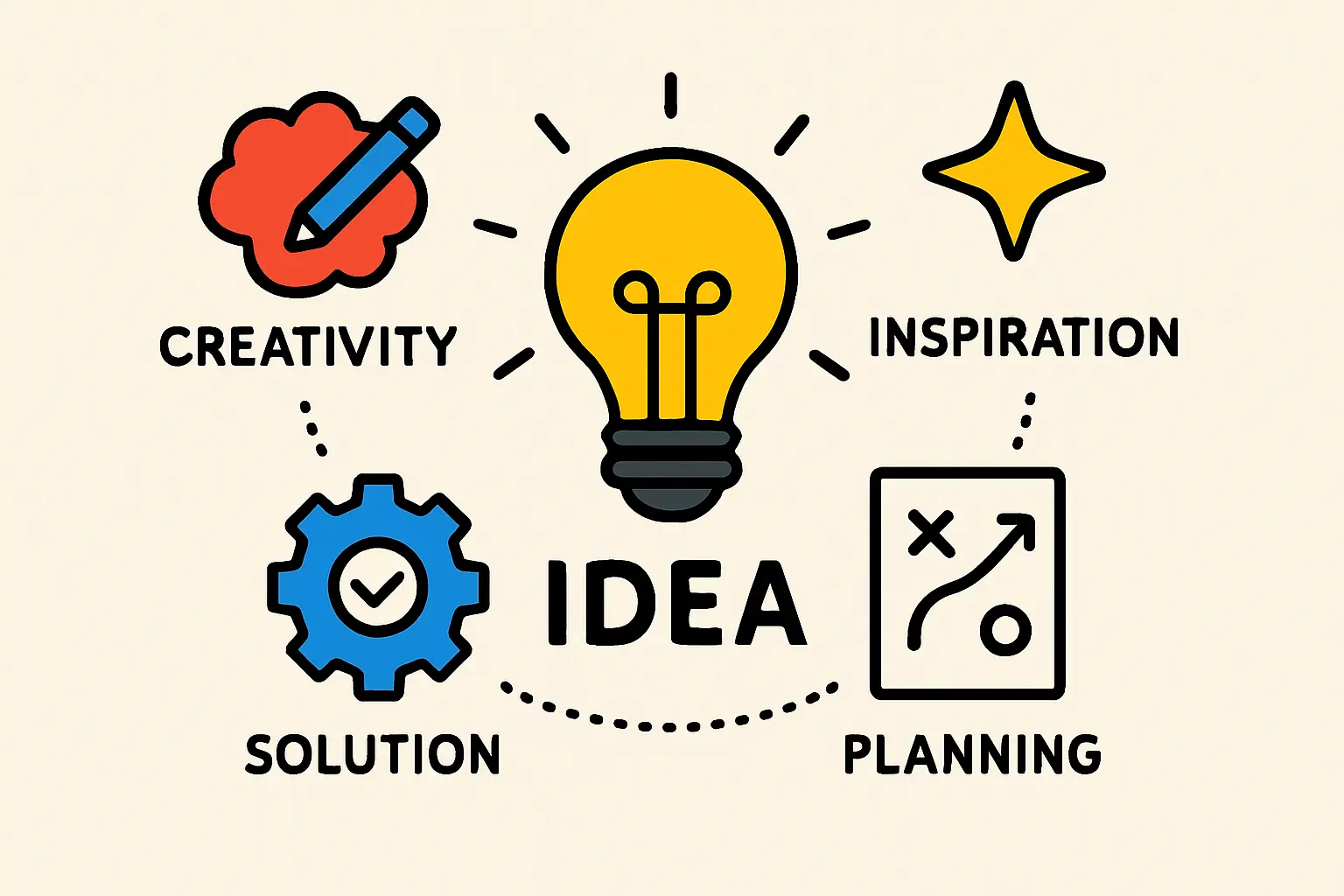
Navigating Mongolian Customs and Tariffs
Once the equipment reaches the Mongolian border, it must clear customs. This process is often where preventable delays occur. Experience from J.v.G. turnkey projects shows that precision in documentation is paramount.
Customs Declarations and Documentation
The Mongolian General Administration of Customs requires a complete and accurate set of documents for all commercial imports. While the list can vary, core documents typically include:
- Commercial Invoice: Detailing the value, origin, and description of each piece of equipment.
- Bill of Lading (B/L) or Rail Waybill (RWB): The contract of carriage for the shipment.
- Packing List: An itemized list of the contents of each crate or container.
- Certificate of Origin: Verifying the country where the equipment was manufactured.
- Technical Specifications: Detailed datasheets for the machinery.
Any discrepancy between these documents can lead to inspections, re-valuations, and significant delays. This can translate into weeks of valuable equipment sitting idle at a border crossing.
Ready to make big Profits?
The solar Industry is Booming
WE HELP NEWCOMERS to the solar industry start their own solar module production line. Customers can make BIG PROFITS by selling modules and finding investors, without wasting money and time on things they don't need!
Tariffs and VAT on Manufacturing Equipment
Mongolia typically applies a 5% customs duty and a 10% Value Added Tax (VAT) on imported goods. However, the government has enacted policies to encourage investment in renewable energy.
A key provision allows for exemptions from customs duty and VAT for specific types of renewable energy equipment. Securing this exemption is a critical financial step. The process requires careful classification of all machinery to ensure it qualifies under the government’s definitions. This underscores why selecting the right solar manufacturing equipment is not only a technical decision but also has direct financial and customs implications.
The Role of a Customs Broker
For any serious industrial project in Mongolia, engaging a reputable local customs broker is not just advisable—it’s essential. An experienced broker understands the nuances of the customs code, has established relationships with officials, and can navigate the administrative process efficiently. They act as the investor’s representative on the ground, ensuring compliance and resolving issues as they arise.
Inland Transportation: The Final and Most Critical Mile
Clearing customs is only half the battle. The final leg of the journey—from the border to the prepared factory site—presents its own set of challenges.
From Border to Factory Site
The distance from the Zamiin-Uud border to Ulaanbaatar is approximately 700 kilometers. While major arteries are paved, the quality of infrastructure can be variable, particularly if the final site is in a more remote industrial zone. A complete turnkey solar manufacturing line can include 15 to 20 large containers, some containing oversized and delicate machinery like glass washers and laminators.
Coordinating a convoy of this size requires a logistics partner with a robust fleet of trucks and experienced drivers. The solar factory building requirements must account for the equipment’s arrival, ensuring foundations are cured and access roads can support heavy loads.

Seasonal and Weather Considerations
Mongolia’s climate is extreme. During the winter, from late October to April, temperatures can drop below -40°C, and heavy snowfall can make roads impassable for days or even weeks. This poses a significant risk to project timelines. To avoid weather-related disruptions, scheduling the arrival of all critical equipment during the warmer months (May to September) is crucial.
Specialized Equipment Handling
Solar module manufacturing equipment is not standard freight. A cell stringer, for example, contains sensitive robotics and optical systems that can be damaged by excessive vibration or improper handling. The import plan must therefore account for specialized offloading equipment, such as heavy-duty cranes and forklifts, as well as a technical team to supervise the careful placement of each machine inside the factory.

A Practical Checklist for a Smooth Import Process
To mitigate the logistical risks, a structured approach is crucial.
- Engage a Logistics Partner Early: Select a freight forwarding company with documented experience in managing multimodal, heavy-machinery projects into Mongolia.
- Verify Tariff Exemptions in Advance: Work with legal and customs advisors months before shipment to secure formal approval for duty and VAT exemptions.
- Insist on Robust Export Crating: Ensure the equipment manufacturer uses high-quality, moisture-proof crating designed to withstand a long and arduous journey.
- Plan the Entire Route: Your logistics plan should cover every step, from the manufacturer’s gate to the anchor bolts on your factory floor.
- Budget for Contingencies: A prudent financial plan should include a 10-15% contingency on shipping and logistics costs to cover potential unforeseen delays or charges.
Frequently Asked Questions (FAQ)
How long does it typically take to ship equipment to Mongolia?
From a major European or Asian port to a factory site in Mongolia, the total transit time is typically 8 to 12 weeks. This includes sea freight, port handling in China, customs clearance, and inland trucking.
What are Incoterms and why do they matter for this process?
Incoterms are standardized trade terms that define the responsibilities of the seller and buyer. For an investor new to international logistics, terms like DAP (Delivered at Place) or DDP (Delivered Duty Paid) are often preferable. They place more responsibility on the seller or logistics provider to manage the entire transport chain, reducing the investor’s direct risk.
Can I use air freight for faster delivery?
Air freight is a viable option for small, high-value, or urgent components like spare parts. For the primary manufacturing machinery (e.g., a laminator weighing several tons), however, the cost is prohibitive and generally not a practical solution.
What is the most common point of failure in the import process?
The most frequent and costly delays stem from incorrect or incomplete documentation. A simple clerical error on a commercial invoice or packing list can halt a multi-million dollar shipment at the border for weeks while it is rectified.
Conclusion: From Global Supply Chain to Local Production
Successfully establishing a solar module factory in Mongolia depends on operational excellence as much as on market strategy. The logistical journey of the equipment is a complex but manageable undertaking that requires foresight, meticulous planning, and the right local partners.
By understanding the route, preparing for customs, and respecting the on-the-ground realities of transportation, an investor can de-risk this critical phase of the project. The next logical step is to integrate a detailed logistics and import strategy into a comprehensive business plan, ensuring that all timeframes and costs are realistically accounted for from day one.

